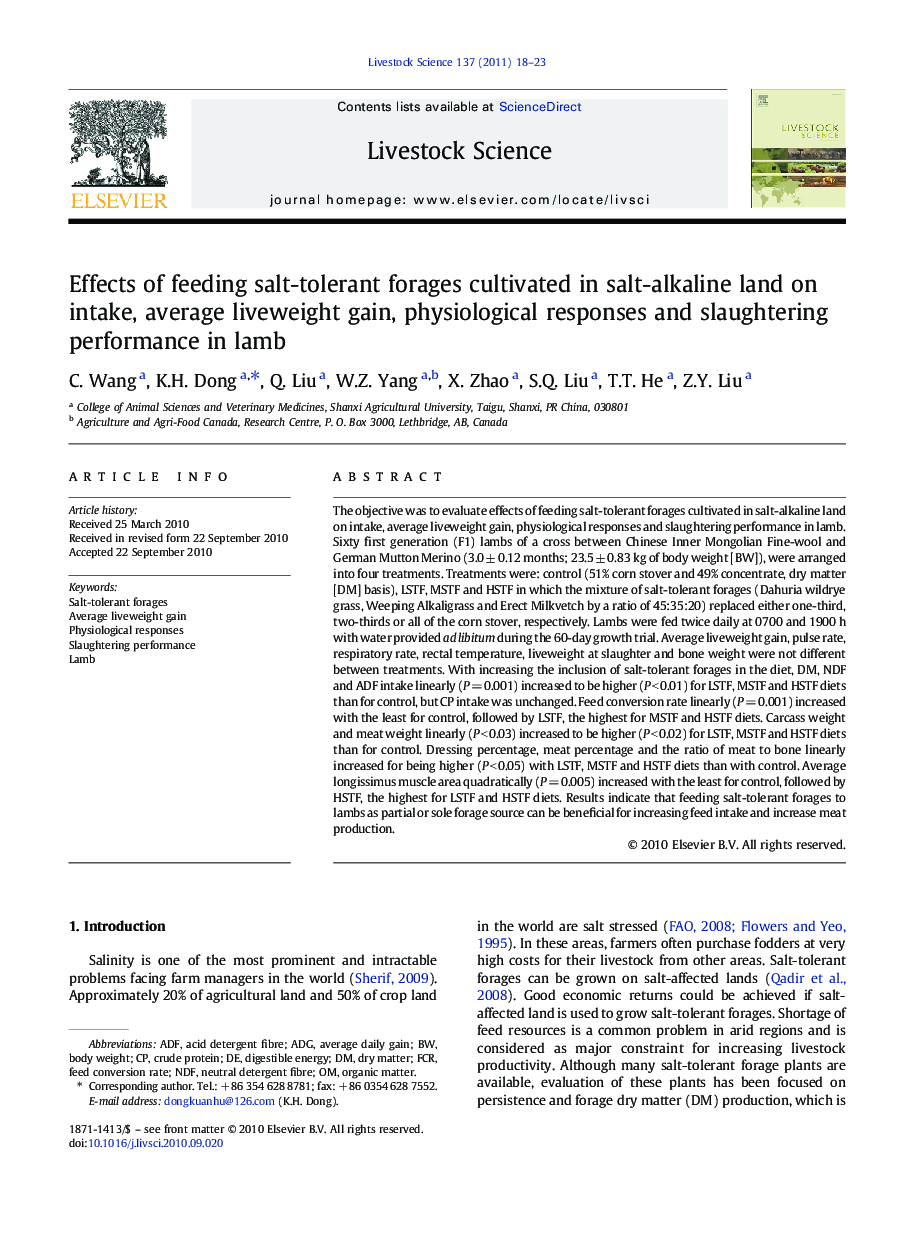| Article ID | Journal | Published Year | Pages | File Type |
|---|---|---|---|---|
| 5790951 | Livestock Science | 2011 | 6 Pages |
Abstract
The objective was to evaluate effects of feeding salt-tolerant forages cultivated in salt-alkaline land on intake, average liveweight gain, physiological responses and slaughtering performance in lamb. Sixty first generation (F1) lambs of a cross between Chinese Inner Mongolian Fine-wool and German Mutton Merino (3.0 ± 0.12 months; 23.5 ± 0.83 kg of body weight [BW]), were arranged into four treatments. Treatments were: control (51% corn stover and 49% concentrate, dry matter [DM] basis), LSTF, MSTF and HSTF in which the mixture of salt-tolerant forages (Dahuria wildrye grass, Weeping Alkaligrass and Erect Milkvetch by a ratio of 45:35:20) replaced either one-third, two-thirds or all of the corn stover, respectively. Lambs were fed twice daily at 0700 and 1900 h with water provided ad libitum during the 60-day growth trial. Average liveweight gain, pulse rate, respiratory rate, rectal temperature, liveweight at slaughter and bone weight were not different between treatments. With increasing the inclusion of salt-tolerant forages in the diet, DM, NDF and ADF intake linearly (P = 0.001) increased to be higher (P < 0.01) for LSTF, MSTF and HSTF diets than for control, but CP intake was unchanged. Feed conversion rate linearly (P = 0.001) increased with the least for control, followed by LSTF, the highest for MSTF and HSTF diets. Carcass weight and meat weight linearly (P < 0.03) increased to be higher (P < 0.02) for LSTF, MSTF and HSTF diets than for control. Dressing percentage, meat percentage and the ratio of meat to bone linearly increased for being higher (P < 0.05) with LSTF, MSTF and HSTF diets than with control. Average longissimus muscle area quadratically (P = 0.005) increased with the least for control, followed by HSTF, the highest for LSTF and HSTF diets. Results indicate that feeding salt-tolerant forages to lambs as partial or sole forage source can be beneficial for increasing feed intake and increase meat production.
Keywords
Related Topics
Life Sciences
Agricultural and Biological Sciences
Animal Science and Zoology
Authors
C. Wang, K.H. Dong, Q. Liu, W.Z. Yang, X. Zhao, S.Q. Liu, T.T. He, Z.Y. Liu,
